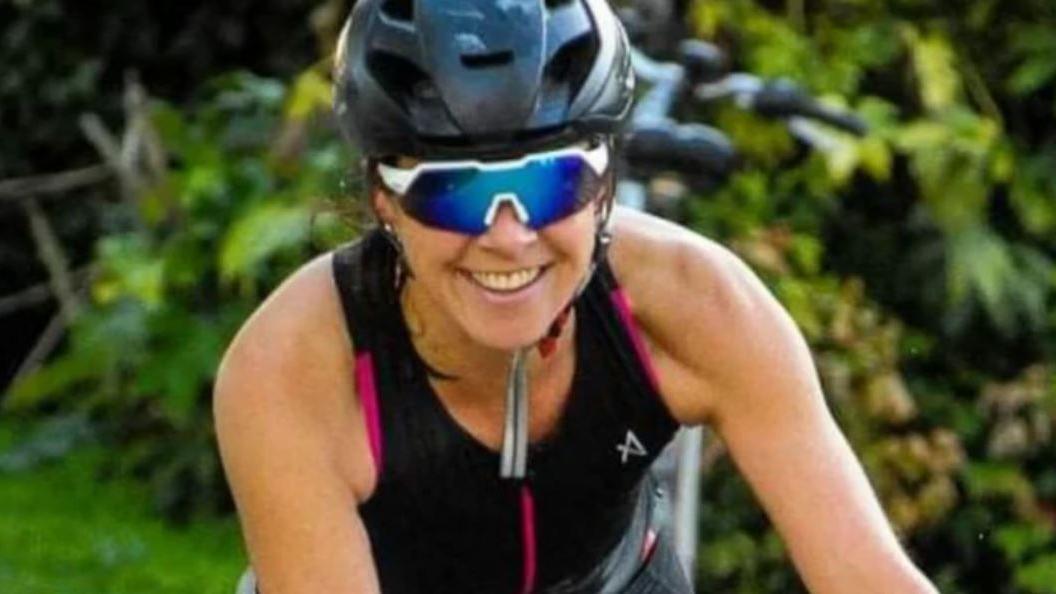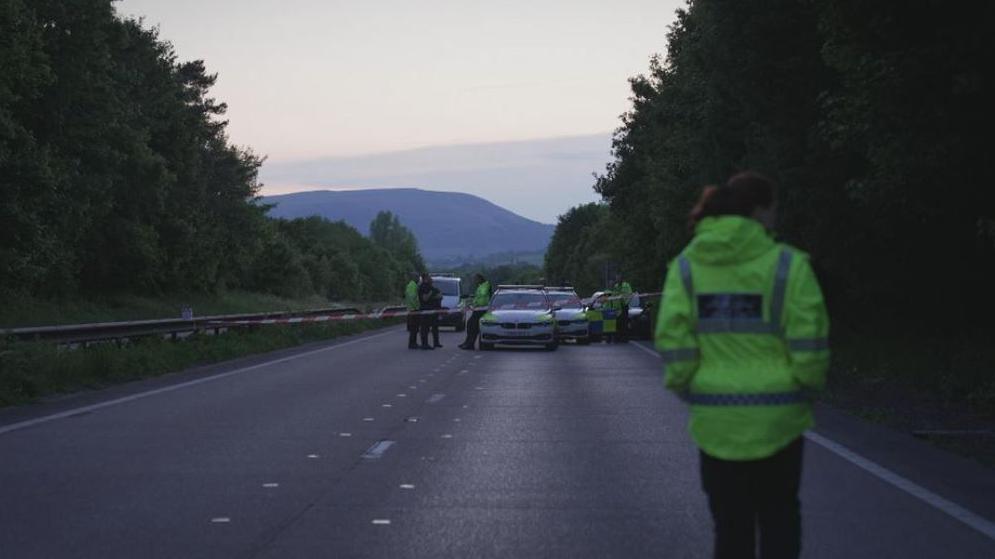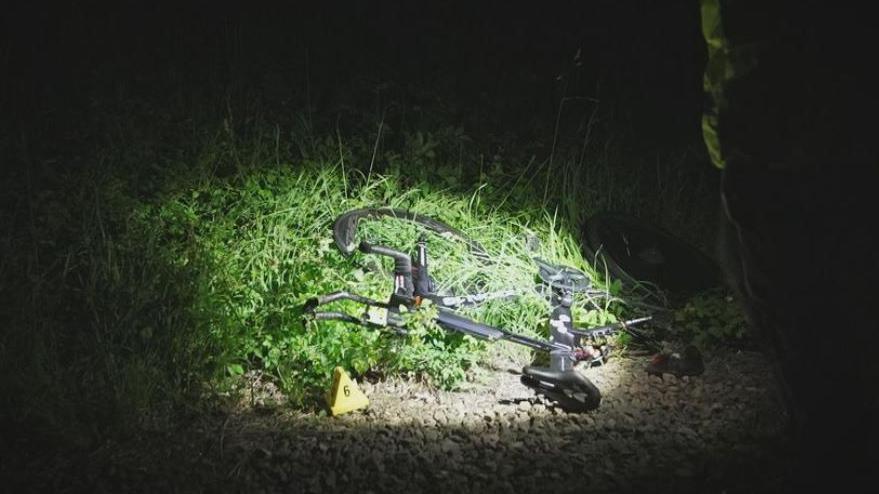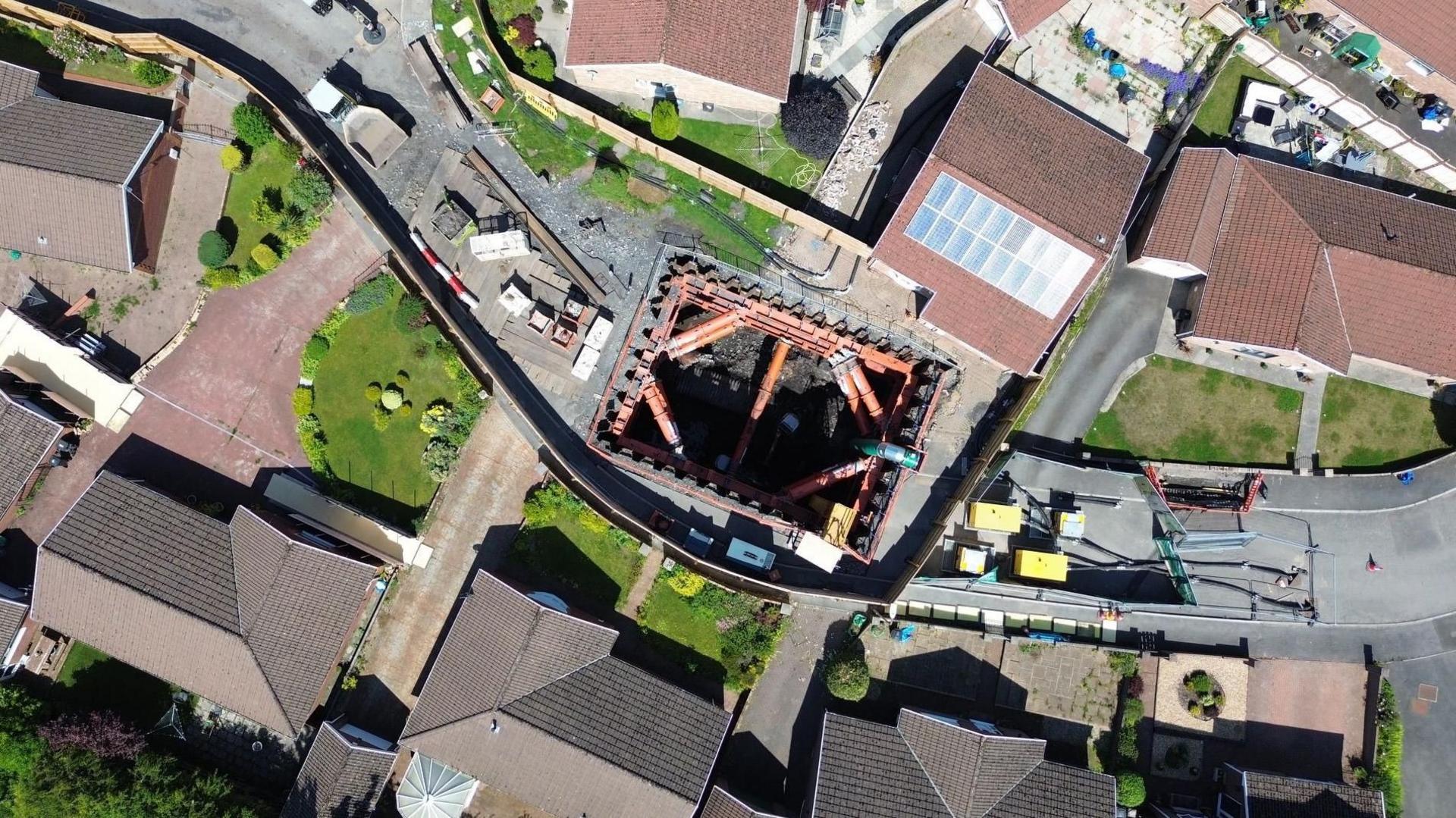Van driver's 'catastrophic' error led to Team GB triathlete's road death

Mrs Comins had represented Wales and Great Britain, and was described by Welsh Triathlon as "a fierce competitor with a positivity and energy that was infectious"
- Published
A Team GB triathlete, described as a "fierce competitor", was killed as she cycled at speeds close to 30mph (48km/h) because of a "catastrophic misjudgement" by a driver who tried to overtake her.
Rebecca Comins, 52, was nine minutes into a time trial on the A40 near Raglan, Monmouthshire, when her bike was hit by a van driven by pub owner Vasile Barbu.
The 49-year-old said he had seen her, but did not know why he hit her, claiming he would ask himself the question for his "whole life".
Despite denying causing death by dangerous driving, he was found guilty and jailed for four years, after a Gwent Police investigation filmed by BBC show The Crash Detectives found Mrs Comins was in his field of view for 18 seconds.
Tributes to cyclist killed in crash with van
- Published8 June 2022
While Mrs Comins was described as "a fierce competitor" by Welsh Triathlon, forensic collision investigator Sgt Cath Raine said: "She was doing everything that she could to be safe; to be visible.
"An innocent cyclist has paid for that misjudgement with her life."
The crash happened on a bright, sunny Thursday evening in June 2022, the first day of the Platinum Jubilee holiday weekend.
A group of cyclists had been waiting patiently for their turn to push off in what was a regular time trial event.
The task ahead was to cover 10 miles (16km), as fast as possible, along a section of straight, flat dual carriageway.
Mrs Comins was in the saddle of her black Argon 18 TT bike, specifically designed for this type of race.
Tucked in tight on the aero handlebars, she achieved speeds close to 30mph (48km/h).
She wore a dark-coloured helmet and navy blue clothing, and contrasting with the light-coloured surface of the concrete road, had a bright orange race number on her back.

Gwent Police said Mrs Comins was "doing everything that she could to be safe"
Barbu had by this point left his home in Abergavenny, and was driving his fully-loaded Vauxhall Movano van on the same section of road.
In an interview shortly after his arrest, he told police he had seen cyclists gathered in the layby, as he drove at between 60mph (96km/h) and 65mph (105km/h) in lane one.
He claimed the van was so heavy, he could not go any faster even if he wanted to.
In fact, an examination found it was so crammed full of furniture, it was half a tonne over its permitted weight.
Barbu recalled seeing cyclists travelling on the road ahead, and described checking his mirrors and moving "half into lane one, half into lane two", to give them space as he passed.
As he gained on Mrs Comins, he told officers he specifically remembered the red light on the rear of her bike.
It was set to daybright mode - which meant it was flashing irregularly.

Vasile Barbu told police during interview that he could not explain how he hit Mrs Comins
Barbu began trying to overtake when he was two metres (6.5ft) behind, and demonstrated with his hands to officers how much space he gave.
"And I heard a knock," he added.
At first, Barbu thought the load had shifted in his van.
But as he pulled over and climbed out of the vehicle, he realised his nearside headlight was broken.
He then saw the damaged bike and injured rider on the grass verge, and dialled 999.
Data from the cycle computer Mrs Comins was using to record her ride revealed she was travelling at 21mph (33.7km/h) when she was struck.
The bike's rear wheel took the full force of the impact.

Crash investigators determined the speed of the cyclist and van prior to the crash
Sgt Raine found a corresponding vertical mark on the front bumper of Barbu's van.
This proved he was travelling in line with the upright bike at the point of the collision.
But with the driver still failing to provide any plausible explanation, officers took the same model of van back to the scene, to retrace his route.
Sgt Raine calculated from his elevated position in the cab, with the sun setting behind, he could have seen at least 500m (1,640ft) of the long, straight road ahead.
At a speed of 60mph (96/5km/h), this meant Mrs Comins could have been within his field of view for 18.5 seconds.
But further details from the cycle computer showed just how visible she would have been.
The altitude and speed revealed she was cycling uphill and accelerating very slightly.
"Because we know that she's going uphill, because we know that she's accelerating, she must have been pedalling," Sgt Raine added.
"Pedalling, so biological motion, draws attention.
"It's one of the things that would have made it easier for any driver following her to be able to see that she was there."
With the driver now running out of excuses, he was charged with causing death by dangerous driving.
Sentencing him, a judge said: "You could very easily have moved to the outside lane to overtake her as other drivers had.
"You could, and should, have given her far more space and yourself far more time."
He described it as a "catastrophic decision to overtake at the last second".
New guidance for overtaking cyclists has since been introduced in the Highway Code, external.
It advises leaving at least 1.5 metres (5ft) when doing speeds of up to 30mph and more space at higher speeds.
The full story can be seen in Crash Detectives: The Last Ride – at 19:00 BST on Tuesday 14 October, on BBC One Wales, BBC Two England, and BBC iPlayer.
Related topics
More top stories
- Published14 October

- Published14 October

- Published13 October
